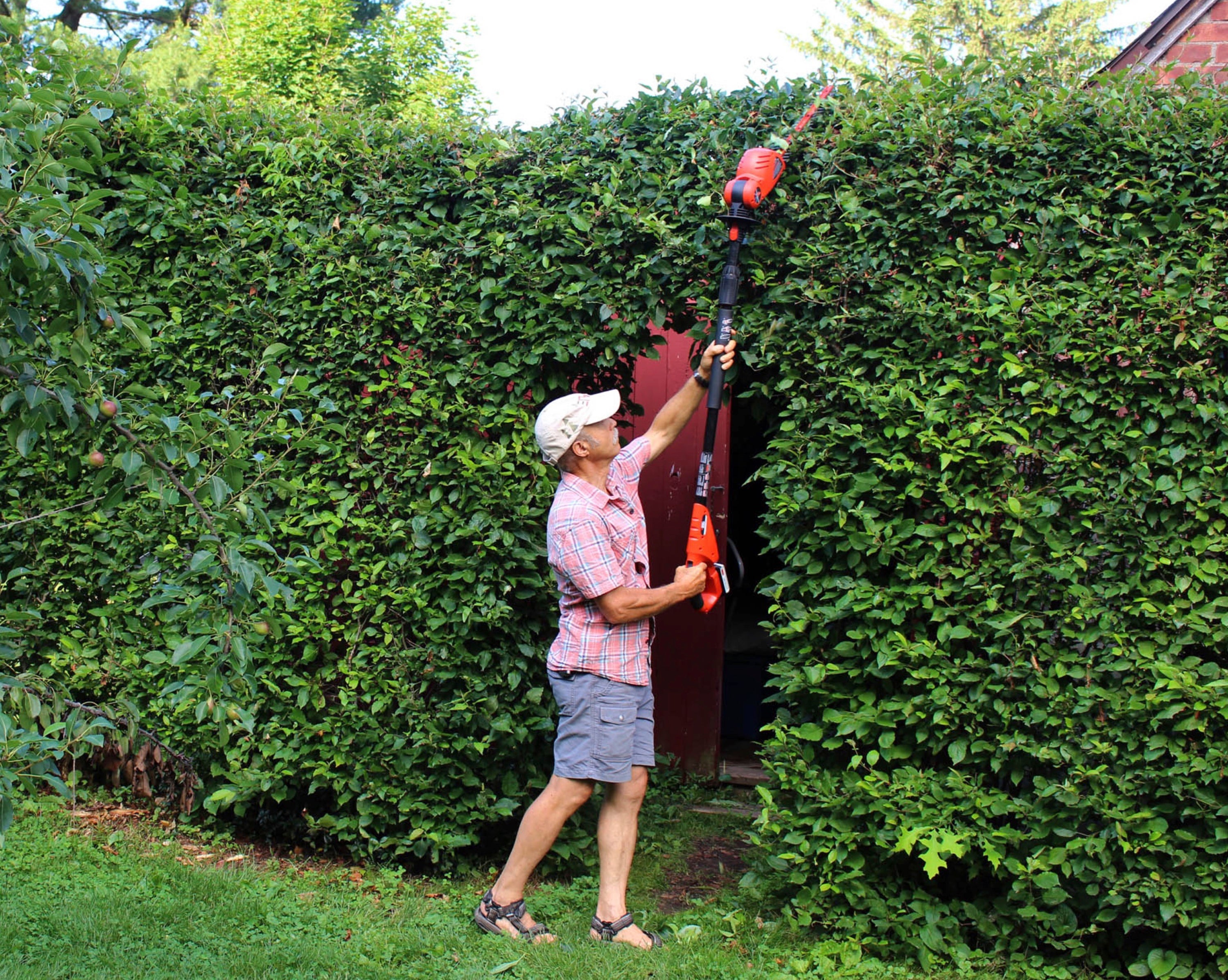Gardening: In praise of pole pruners, and no ladder climbing
Looking for a way to trim high trees and hedges without climbing a ladder

Your support helps us to tell the story
From reproductive rights to climate change to Big Tech, The Independent is on the ground when the story is developing. Whether it's investigating the financials of Elon Musk's pro-Trump PAC or producing our latest documentary, 'The A Word', which shines a light on the American women fighting for reproductive rights, we know how important it is to parse out the facts from the messaging.
At such a critical moment in US history, we need reporters on the ground. Your donation allows us to keep sending journalists to speak to both sides of the story.
The Independent is trusted by Americans across the entire political spectrum. And unlike many other quality news outlets, we choose not to lock Americans out of our reporting and analysis with paywalls. We believe quality journalism should be available to everyone, paid for by those who can afford it.
Your support makes all the difference.Two millennia ago, the Roman writer Columella described the vintoria falx, a six-part, specialized pruning tool for grapes. What a stir that tool must have caused among Roman grape growers when it was first introduced!
A more recent innovation in pruning, in the last century or so, was the pole pruner, which is a pruning saw or rope-activated shear blade mounted at the end of a pole. With it, you can work on branches even 15 feet high while your feet are planted on terra firma.
That's perfect for people like me who prefer not to work from ladders.
My pole pruner is capped by both a saw blade and a shear blade, which makes the pruner not quite as nifty as Columella’s six-part tool, but useful nonetheless.
POWERED PRUNERS MAKE THE JOB EASIER
The main problem with using a pole pruner is that it’s difficult to maneuver a blade at the end of a long pole. The problem is compounded with larger branches because they require an initial undercut to prevent tearing of the bark as they come down; to make that undercut, you have to work the pole against gravity.
Enter the powered pole pruner, an innovation of the 21st century. This tool is, essentially, a chainsaw on the end of a telescoping pole. In some models, the motor or engine is mounted atop the pole, near the chain. In others, the motor or engine is at the base of the pole, where you’re holding the tool, with the turning motion transferred up the pole to the chain at the end.
Compromises are unavoidable when you mount a chainsaw on the end of a pole. A compromise between weight and power, for example.
A powered pole pruner might relieve you of some effort in cutting, but you’re going to have to position and hold up that motorized saw perched at the far end of a long pole. If you make the saw lighter, that translates into less power. The cutting bars on these saws are usually less than a foot long.
Electric motors are lighter than gasoline motors, so provide yet another solution to the weight problem. Battery power would seem ideal, except that battery power is limited. A corded, electric pole pruner seems like a good compromise, then, as long as you’re not too far from a plug and have a good extension cord.
TALL HEDGES BECOME MORE MANAGEABLE
One variation on the pole pruner is causing a stir, in my backyard at least. That is the powered pole hedge trimmer, an oscillating trimmer mounted on the end of a pole. They, too, can be gasoline or electric powered.
Why put a hedge trimmer on the end of a pole? For tall hedges, of course! A nice feature of most pole hedge trimmers is that the angle of the head can be varied, a useful feature if you’re trimming the top of a high hedge to be flat.
Like stone or brick walls, big hedges create bold and venerable shapes that screen and enclose the landscape, and direct our eyes and feet through it. Since I’ve acquired a pole hedge trimmer, I’ve been able to sculpt my 9-foot-high tea crabapple hedge into a green wall with a “doorway” carved into it — all with my feet happily planted on terra firma.
—-
Lee Reich writes regularly about gardening for The Associated Press. He has authored a number of books, including “Growing Figs in Cold Climates” and “The Pruning Book.” He blogs at http://www.leereich.com/blog. He can be reached at garden@leereich.com.
Subscribe to Independent Premium to bookmark this article
Want to bookmark your favourite articles and stories to read or reference later? Start your Independent Premium subscription today.